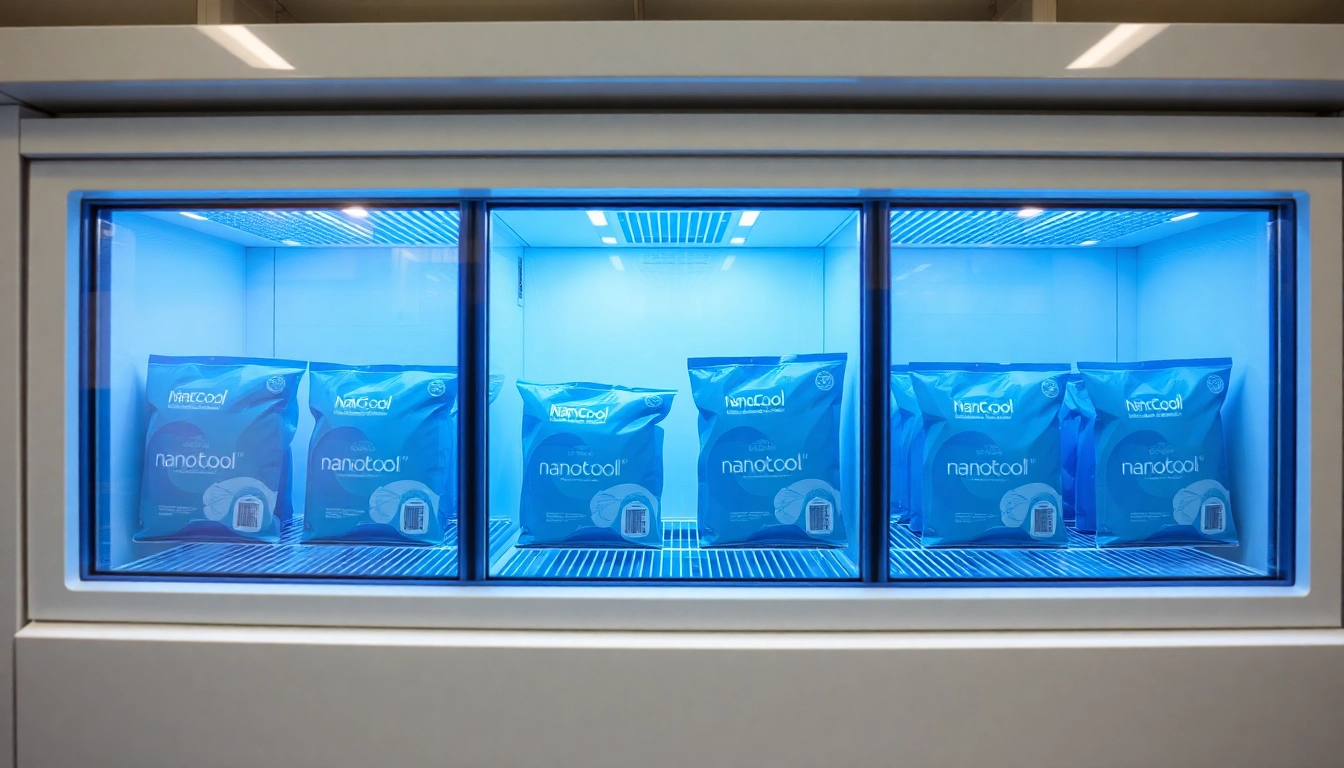Understanding NanoCool Technology
In today’s fast-paced world, maintaining temperature-sensitive shipments is paramount, especially in industries like healthcare, pharmaceuticals, and biotechnology. The nanocool technology has emerged as a game-changer in the realm of temperature-controlled shipping, providing innovative solutions for those requiring efficient and reliable temperature management. This article delves into the intricacies of NanoCool technology, its applications, comparisons with other cooling methods, best practices, and future trends in temperature-controlled shipping.
What is NanoCool?
NanoCool refers to a series of advanced cooling systems designed to maintain a precise temperature range during shipping, specifically between 2°C and 8°C. Unlike traditional cooling methods that rely heavily on gel packs or active refrigeration systems, NanoCool utilizes innovative evaporative cooling technology. This system enables it to operate effectively without the need for electricity or prior freezing—making it an invaluable asset in various sectors where maintaining a stable environment is critical.
How NanoCool Works
The NanoCool system operates through a unique process involving the evaporation of water. Within the shipment container, water is stored where it is gradually released during transit. As the water evaporates, it absorbs heat from the surrounding environment, thus lowering the temperature within the container. This method allows for sustained cooling over an extended period (up to 96 hours), essential for items like vaccines, biologics, and other temperature-sensitive pharmaceuticals. The engineering behind NanoCool ensures that even if the external temperature fluctuates dramatically, the internal environment remains stable.
Key Benefits of Using NanoCool
- Extended Cooling Duration: NanoCool systems can maintain the required temperature range for up to 96 hours, making them ideal for long-distance shipping.
- Ease of Activation: The cooling process is initiated with a simple push of a button, requiring minimal training or understanding of complex systems.
- Lightweight Design: NanoCool units are designed to be lightweight and portable, further enhancing their usability in various shipping contexts.
- Cost Efficiency: Compared to traditional gel pack systems, the NanoCool technology can offer long-term savings due to reduced reliance on refrigeration or ice packs.
Applications of NanoCool Systems
Healthcare and Pharmaceutical Shipping
In the healthcare industry, the integrity of temperature-sensitive shipments can be the difference between a successful treatment and significant loss. NanoCool systems have been widely employed to transport vaccines, insulin, and biologics. Their reliability and efficiency allow healthcare providers to ensure that critical medications arrive at their destination within the required temperature parameters without risks of spoilage or degradation.
Biotechnology and Research Usage
Research and biotechnology firms are responsible for sensitive materials like samples, reagents, and biological products. Within these industries, NanoCool provides an effective solution for maintaining controlled temperatures during transport, facilitating experiments and tests that require strict adherence to temperature standards. The system’s reliability ensures that the research environment is preserved, thus supporting consistent results and outcomes.
Logistics and Cold Chain Management
The logistics sector is increasingly adopting temperature-controlled shipping solutions as the demand for precision in cold chain management rises. NanoCool systems play a pivotal role in ensuring compliance with stringent shipping regulations and maintaining the quality of perishable products. With their innovative technology, logistics providers can manage risks associated with temperature fluctuations and deliver higher quality service to clients.
Comparing NanoCool to Other Cooling Technologies
Efficiency of NanoCool vs. Gel Packs
Many shipping solutions still rely on traditional gel packs. While effective to a degree, gel packs necessitate preconditioning and can become ineffective if not properly frozen or cooled. Conversely, NanoCool’s evaporative technology eliminates these concerns. It activates reliably upon demand and maintains temperature without requiring ice packs, reducing handling time and labor associated with preparing shipments for transport.
Temperature Stability: A Key Advantage
Stable temperature maintenance is crucial in temperature-sensitive shipping. While both NanoCool and gel packs aim to maintain a specific temperature, NanoCool’s constant evaporative cooling ensures a more stable environment. It leverages the natural physical process of evaporation, which is less prone to the thermal performance degradation seen in ice packs as they thaw out.
Cost-Effectiveness in Long-Term Shipping
For organizations seeking cost-effective shipping solutions, NanoCool presents a compelling case. Since NanoCool systems provide extended periods of temperature control with minimal oversight, they can significantly reduce overall shipping costs by minimizing the need for additional cooling measures while ensuring high-quality service delivery. In contrast, traditional gel pack solutions often lead to increased disposal and operational costs.
Best Practices for Using NanoCool
Proper Activation of NanoCool Systems
To maximize the efficacy of NanoCool systems, it is essential to ensure they are activated properly prior to shipment. Users should familiarize themselves with the activation process (typically involving a single button push) and allow a period for the system to acclimate, thus ensuring optimal performance during transit.
Monitoring Temperature During Transit
Consistent monitoring during transit is crucial, even with a reliable system such as NanoCool. Utilizing temperature monitoring devices can provide insights into the conditions experienced during shipping and ensure compliance with established standards. This vigilance can drastically reduce the risk of failure and enhance accountability in the supply chain.
Common Mistakes to Avoid with NanoCool
Some common pitfalls when using NanoCool systems include neglecting to activate the device until after it has been sealed, failing to account for varying environmental conditions, and overlooking regular maintenance of the units. To avoid these issues, proper training and adherence to guidelines are essential.
Future Trends in Temperature-Controlled Shipping
Innovations in Evaporative Cooling Technologies
As the demand for temperature-controlled transport continues to grow, ongoing innovations are emerging within the field of evaporative cooling technology. Companies are investing in research and development to refine materials, enhance the efficacy of cooling (possibly introducing smart tech), and reduce costs further, thereby making systems more accessible to a wider audience.
The Role of Sustainability in Shipping Solutions
Sustainability is becoming increasingly important in shipping practices today. NanoCool systems are inherently more sustainable due to their lower energy consumption compared to traditional systems, but future trends will likely involve incorporating eco-friendly materials and practices into the production and usage of these technologies.
Market Predictions for the NanoCool Industry
Market analysts predict steady growth for the NanoCool industry as more businesses recognize the importance of reliable temperature-controlled shipping. Innovations in technology and sustainable practices may lead to increased adoption rates, ultimately reshaping how temperature-sensitive products are transported worldwide.















Leave a Reply